Mt. Everest is the highest mountain in the world and trekking to the base camp is no easy feat either. It’s a journey through some of the most spectacular mountain views but also through a number of beautiful villages along the way. The Everest Base Camp Trek takes anywhere from 9 to 15 days depending on your route and itinerary but also how well you acclimatize.
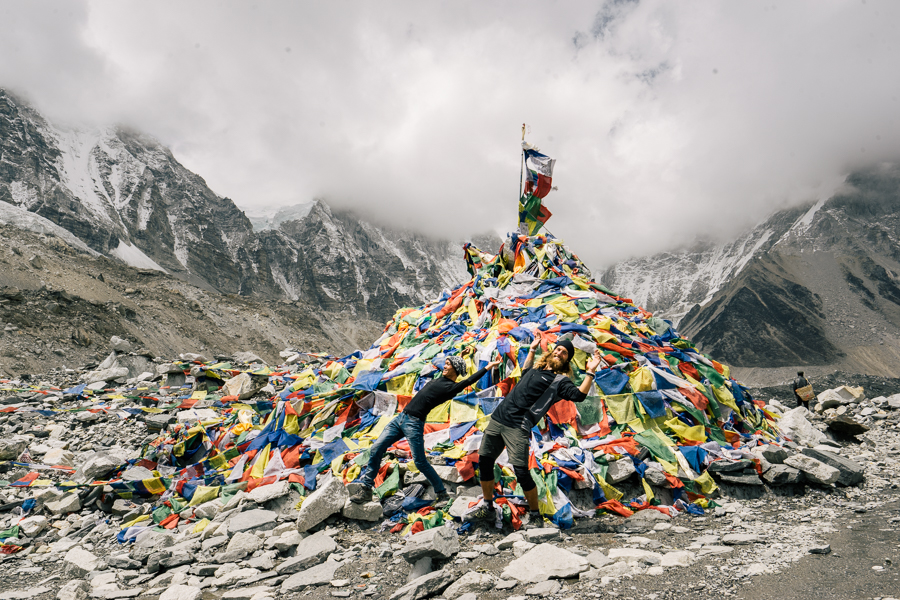
In this article, I will cover everything you need to know about the logistics of the Everest Base Camp (EBC) trek but I will also share with you my experience on each day of the trek. A short journal entry with a vlog from my experiences from each day will give you an idea of what to expect and you can see how the journey went for me. After sharing my experience, I will then include all of the information you need to know in this complete guide about trekking to Everest Base Camp.
BEST TREKKING COMPANY IN NEPAL
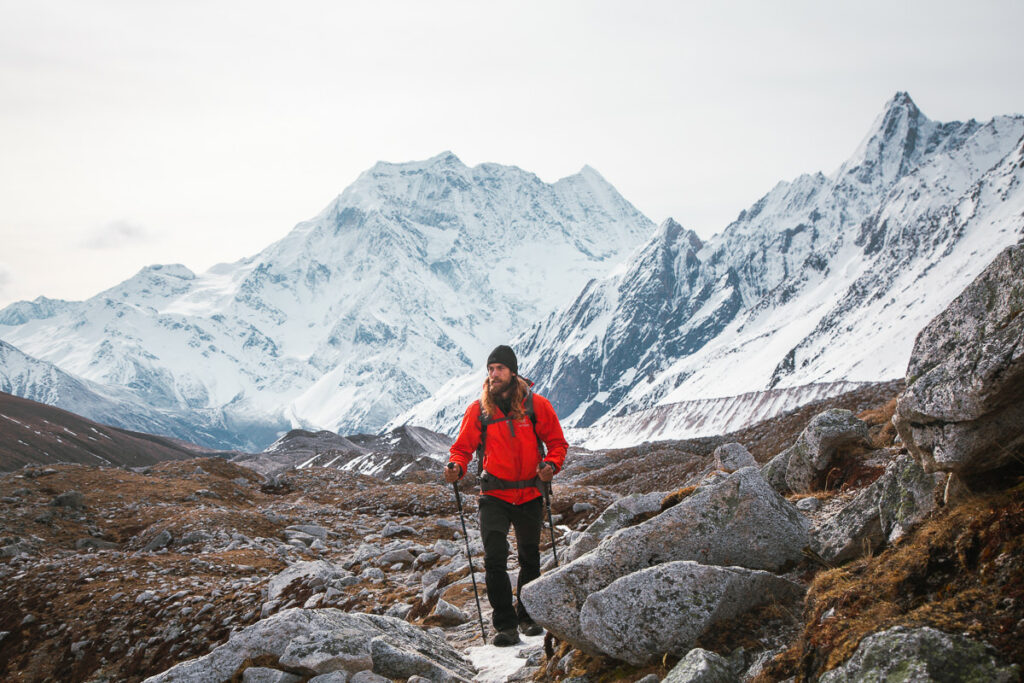
Interested in trekking in Nepal or doing the Everest Base Camp Trek?
I recommend booking your trek with Himalayan Masters, which is the company I use for all of my treks in Nepal. Use my code JACKSON5 when you book to receive a 5% DISCOUNT.
EVEREST BASE CAMP TREK DETAILS
- Distance: 120 km round-trip from Lukla to Base Camp and back to Lukla (You will fly to Lukla from Kathmandu)
- Days required: 12 -14 days
- Total Incline: (Undulation) – 6015 m
- Total Decline:(Undulation) – 5821 m
- The highest point on the trek: 5640 m/18 500 ft, this is actually at Kala Patthar, which you will hike to in the morning after reaching Everest Base Camp. This is where you get the best views of Mount Everest.
- Difficulty: It’s hard for an average hiker but the altitude is definitely more difficult to manage than the distance with several rest days and acclimatization days.
- Permits: Your tour operator will take care of these but in case you do the trek independently it’s good to know that you will pay a Local Government fee and Sagarmatha National Park permit, which totaled together cost about $40-$50
- Cost per day: This will depend on your tour price and whether you do the trek with a group, a porter, a guide, or independently. Somewhere between USD $40 (without flights) $60 per person per day with all meals, transport, and guides included.
- Guide: It isn’t required but highly recommended. You can do the Everest Base Camp Trek in a few different ways such as by yourself with no guide, with an experienced guide or in a group with a guide.
- Accommodation: Guest Houses, also known as Tea Houses along the way where you will sleep in a comfortable bed and have access to showers (extra charge) and restaurant facilities. Very comfortable accommodation and great after a long day of hiking.
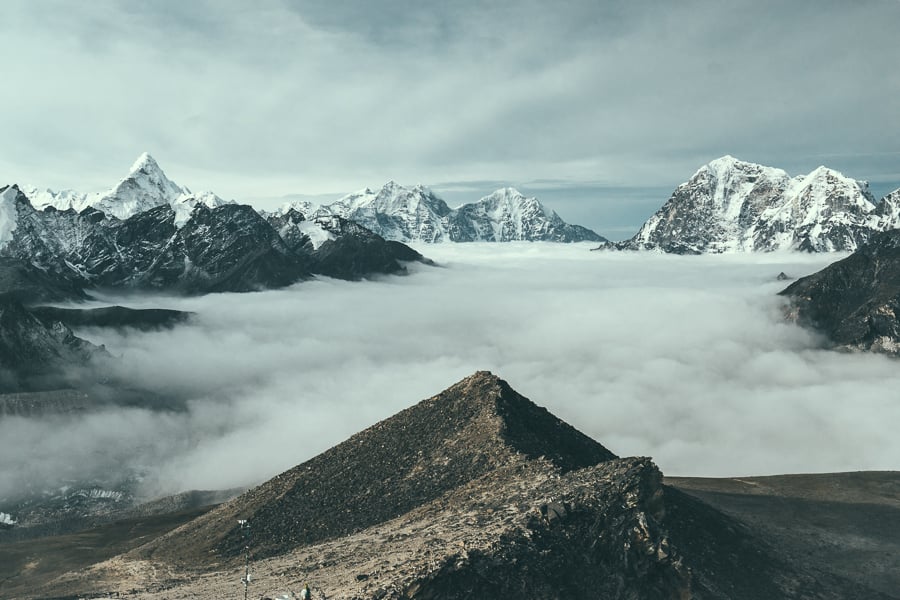
TRY THE 3 BEST TREKS IN NEPAL

Manaslu Circuit: My personal favorite 2-week trek through Tibetan villages and stunning scenery. Less crowded and more authentic.
Annapurna Circuit: The most beautiful & scenic 2-week trek in Nepal although can be crowded at times.
Everest Base Camp Trek: The most iconic 2-week route reaching the famous (EBC) Everest Base Camp at 5,300m.
BOOKING A GUIDE FOR THE EVEREST BASE CAMP TREK
The Everest Base Camp Trek doesn’t require a guide but it’s great to have a guide managing the logistics such as directions, tea-houses, distances, medical issues, and the overall organization. I’d say 90% of trekkers go with a guide. I highly recommend booking with Himalayan Masters which is one of the top trekking companies when it comes to the Everest Base Camp Trek. I’ve trekked many different routes in Nepal with them and I’m a big fan of their attention to detail.
The trek costs around $1500 USD with Himalayan Masters as of 2022 and includes all transfers, accommodation, meals, drinks, permits, and even the hotel stay before and after the trek at a high-quality hotel. I honestly had a great time on this trek and I can wholeheartedly recommend Himalayan Masters.
You can use my discount code ‘JACKSON5‘ for 5% off the total price of your trek with Himalayan Masters which is a pretty handy saving.
Email: [email protected]
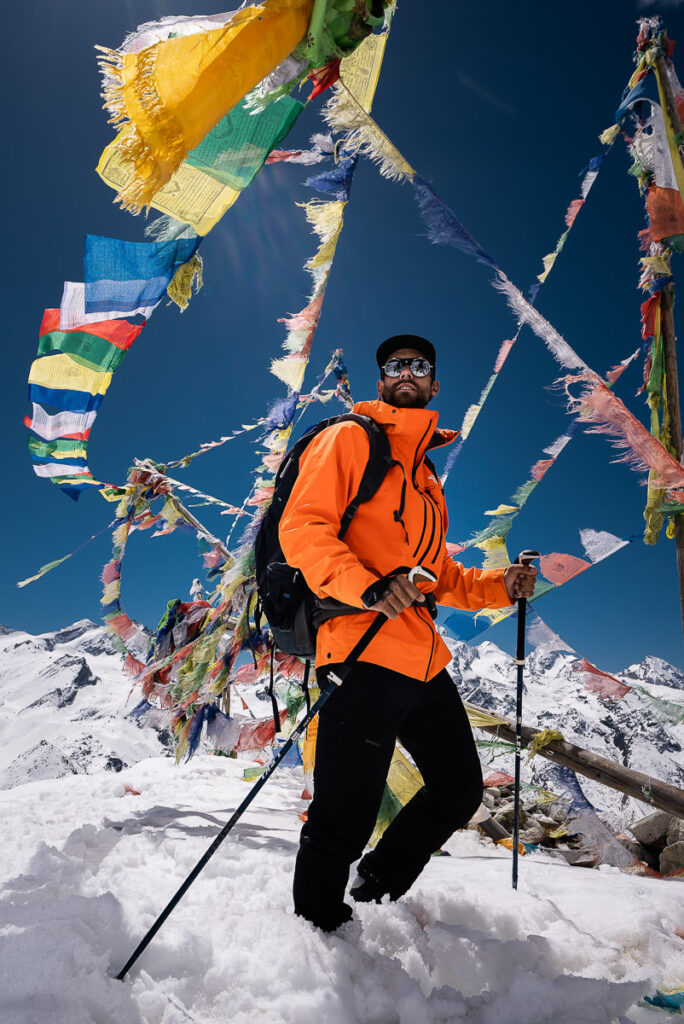
TOP 3 PLACES TO STAY IN KATHMANDU

- Ultimate Luxury: The Dwarika’s Hotel – Luxury, Spa-service, Pool
- Best Value: Aloft Kathmandu Thamel – Swimming Pool, Gym & Great Restuarant
- Budget Choice: Hotel Jampa is easily the top cheap hotel in Kathmandu
MY EXPERIENCE ON THE EVEREST BASE CAMP TREK
I’d like to share with you my experience and photos from my two weeks of trekking to Everest Base Camp. I hope you enjoy recounting the journey as much as I did.
Day One, Two & Three: Kathmandu to Lukla to Phak Ding to Namche
Day one began with an incredible flight from Kathmandu to Lukla. Unfortunately for me, I had come down with food poisoning the night before the trek so it was a rough start for me but I decided to battle on. The flight gives you incredible views of the Himalayas before you touch down at Lukla Airport, one of the most famous and scariest airports in the world. The landing strip is on a downwards slope and gives passengers a heart-in-mouth moment on take-off and landing.
After landing, we had a quick coffee and look around Lukla before making the short and relatively flat trek through the villages and forest to reach Phak Ding. Day one is a short trek but you have made your way up pretty high even just by landing at Lukla Airport so it is not a bad idea to take the first day easy, given that your biggest battle on this trek will be the altitude, not the distance or speed.
Day Two for me was actually a day of recovery in Phak Ding where I spent the entire day sick in the guesthouse. There is usually one day scheduled on your itinerary for sickness or rest day so I had used mine early!
Day three was a tough day as I was still recovering but we made the climb up to Namche, which is a winding climb through the forest and out above the tree line. Namche Bazaar is located at an altitude of 3450m inside the Sagarmatha national park, a UNESCO world heritage site and it is actually known as the last frontier for trekkers and climbers before the trek to Everest Base Camp starts to get serious.
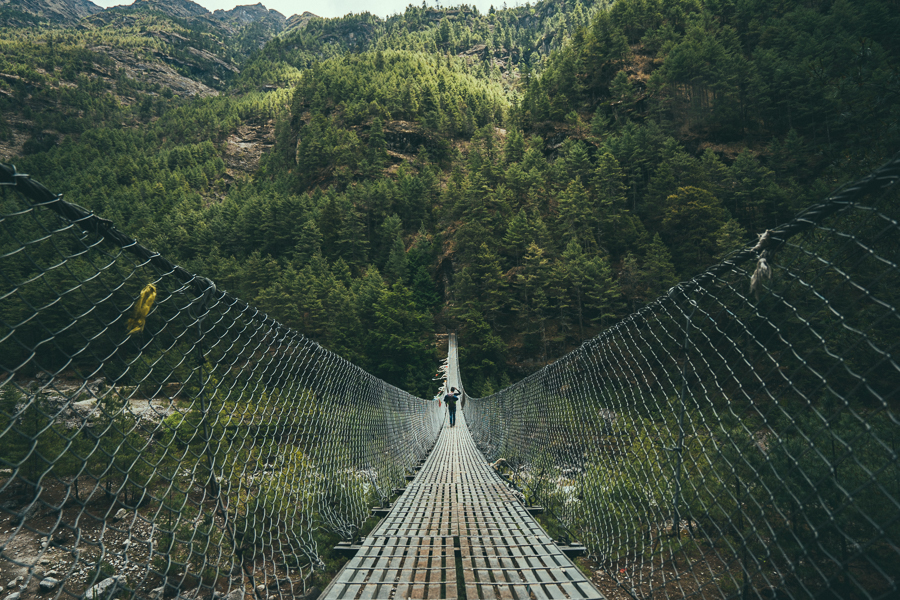
Day Four & Five: Namche to Tengboche to Dingboche
Day four is a big day of climbing. Namche Bazaar is 3,440 meters and Tengboche is 3,860 meters but the constant undulation on the trail means you will climb almost 900 meters of incline throughout the day.
The day begins by following the valley wall as you get some great views of the Everest mountain range out in front. The path then heads down into the valley floor as you lose a lot of elevation. However, you will then cross over the river and gain all the elevation back as you approach Tengboche where you will stay for the night.
Expect to have views of the mighty mountain Ama Dablam as well as Lhotse, Nupste, and even the peak of Mount Everest. Interestingly this will be one of the best views you have of Mount Everest until you reach Kala Patthar in a few days’ time.
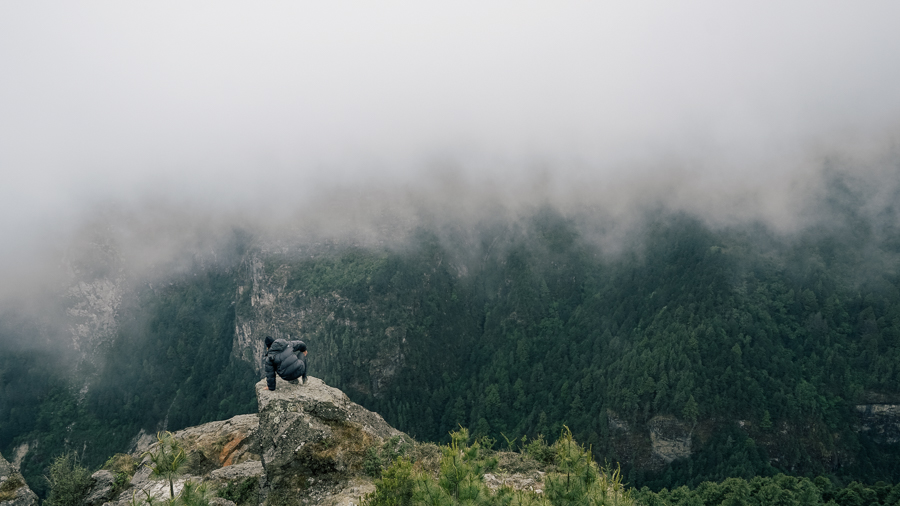
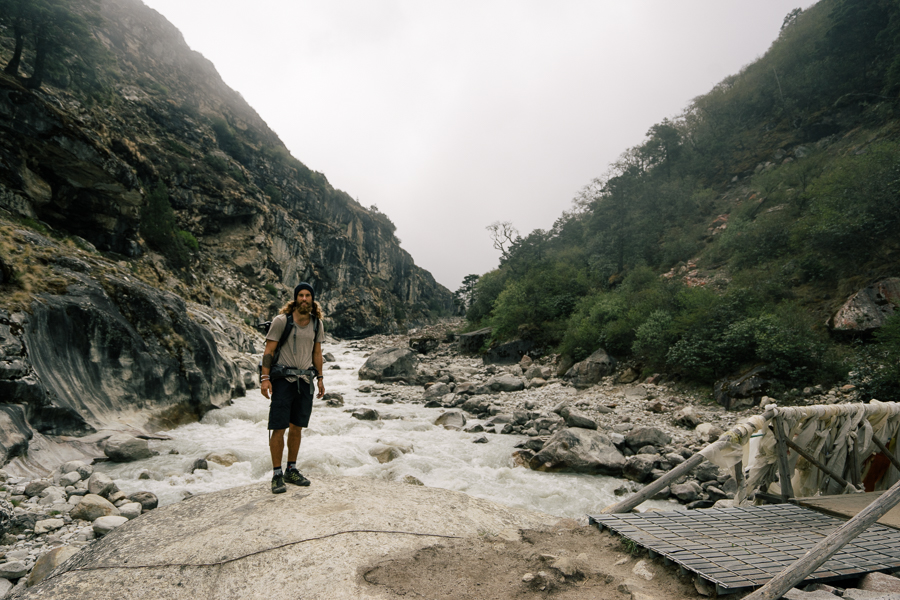
On day five of the Everest Base Camp trek, you say goodbye to the village of Tengboche and head towards Dingboche. It is a stunninng day as you voyage through the valley as the glacier river flows down below while snow-capped peaks loom in the distance. Along the trek, you will stop for tea in the village of Pangboche with lots of views of Ama Dablam mountain.
The elevation gain on day five is 700 meters and the entire journey will take about 5-6 hours at a moderate pace. Dingboche is 4,400 meters above sea level so it’s common to start to have a couple of symptoms of altitude sickness at this stage of the trek.
When you leave Tengboche, you begin a descent into the beautiful forest and can enjoy the shade as you pass through the village of Deboche. After you pass through Deboche, the trail gains some elevation and you will cross a suspension bridge, which guides you to the left side of the valley. Ama Dablam is still in view as you navigate the steep sections of the incline.
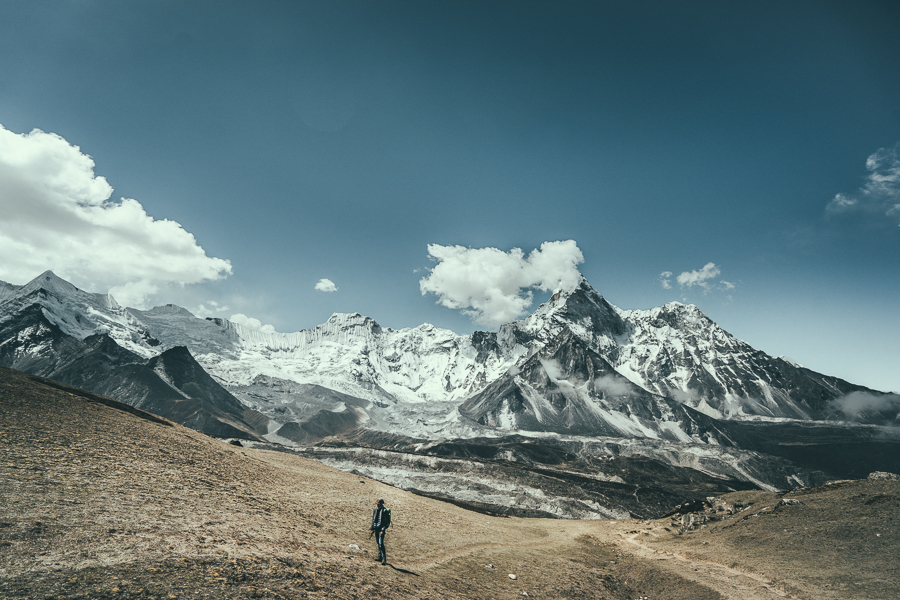
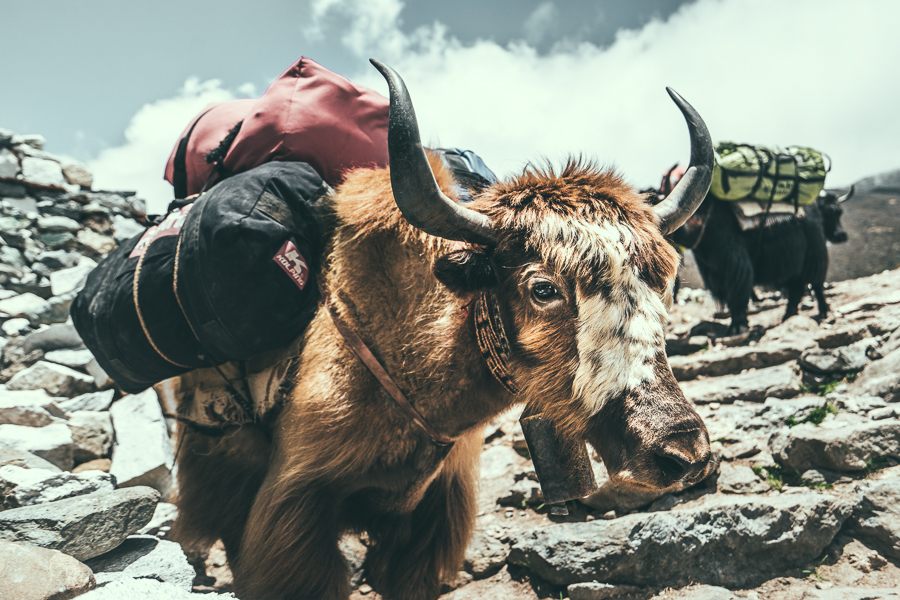
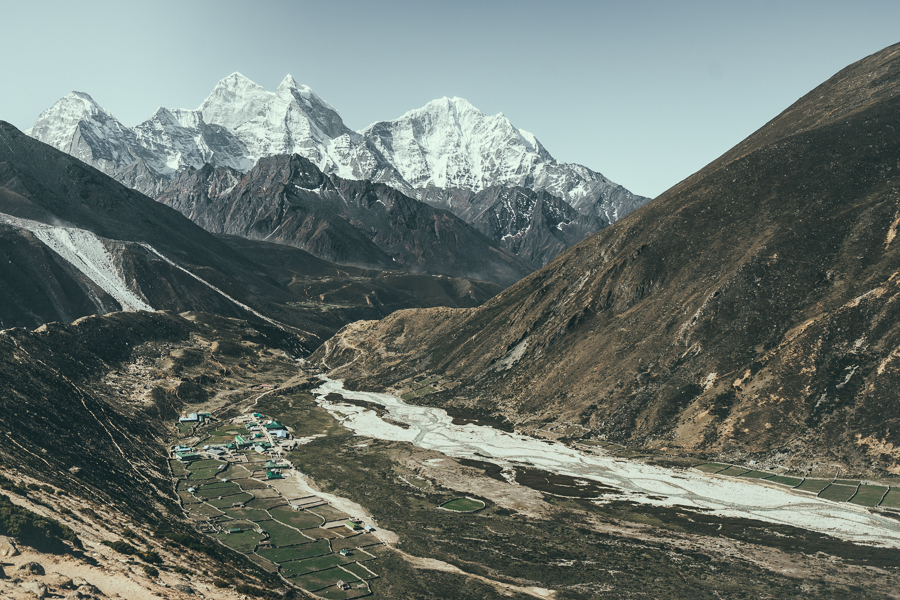
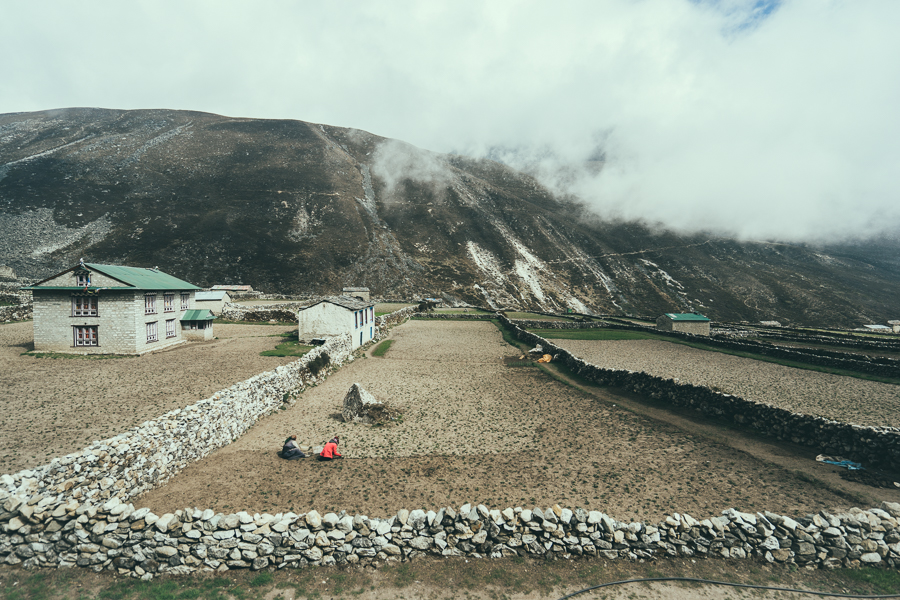
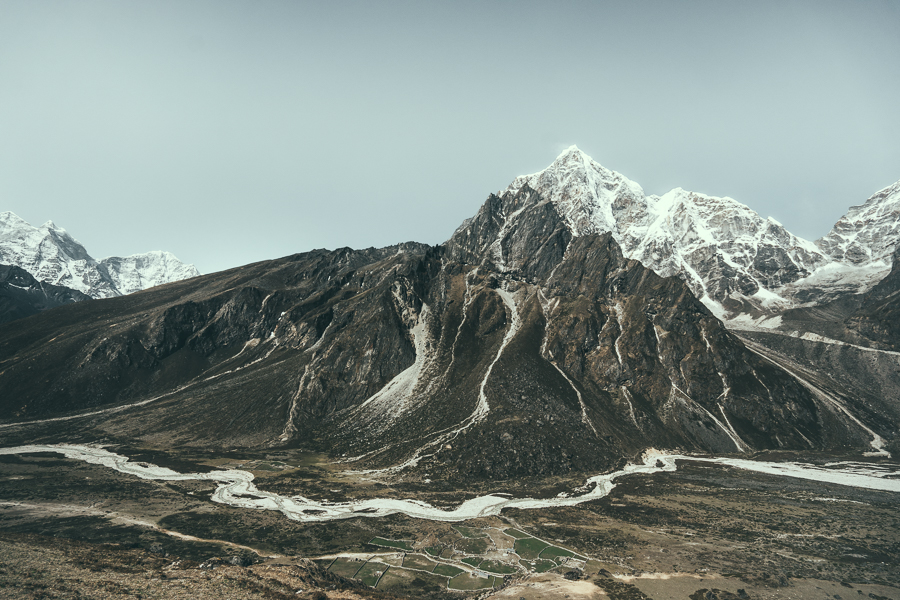
Day Six & Seven: Chuukhung Ri Acclimitization and Dingboche to Lobuche
Day six was an acclimatization day up to Chukhung Ri viewpoint, which was actually one of my favorite days. Because we would stay a second night in Dingboche, we left our bags in the tea house and did the climb up and down Chukhung Ri to help our bodies adjust to the altitude. The idea is to hike high and sleep low, which helps the body adapt.
Chukhung Ri is actually at 5500 meters, which is more than 1000 meters above Dingboche. This is a steep climb and you don’t need to go all the way to the summit. However, with spectacular views, isolation from other hikers, and a good chance to help your body adapt to the altitude, it’s a great day excursion with incredible scenery.
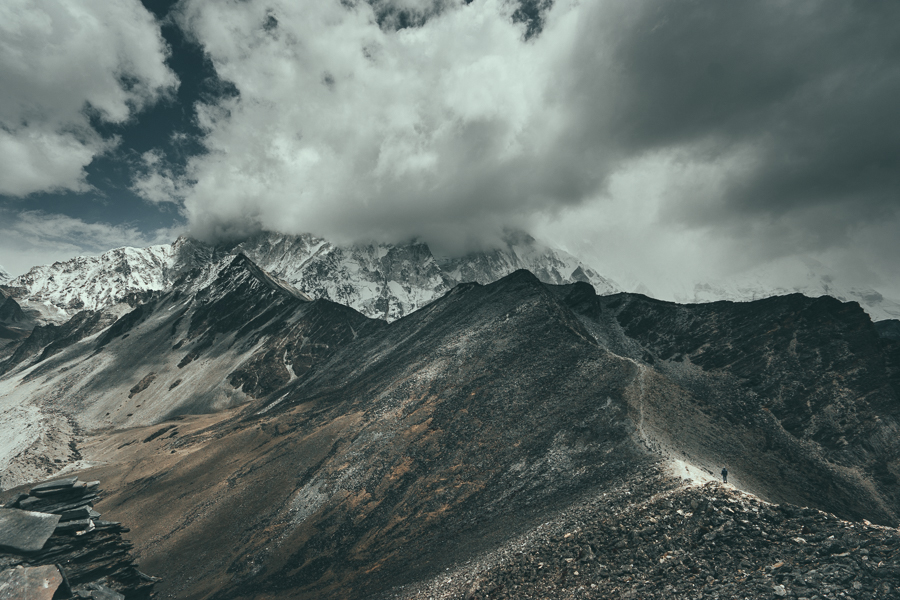

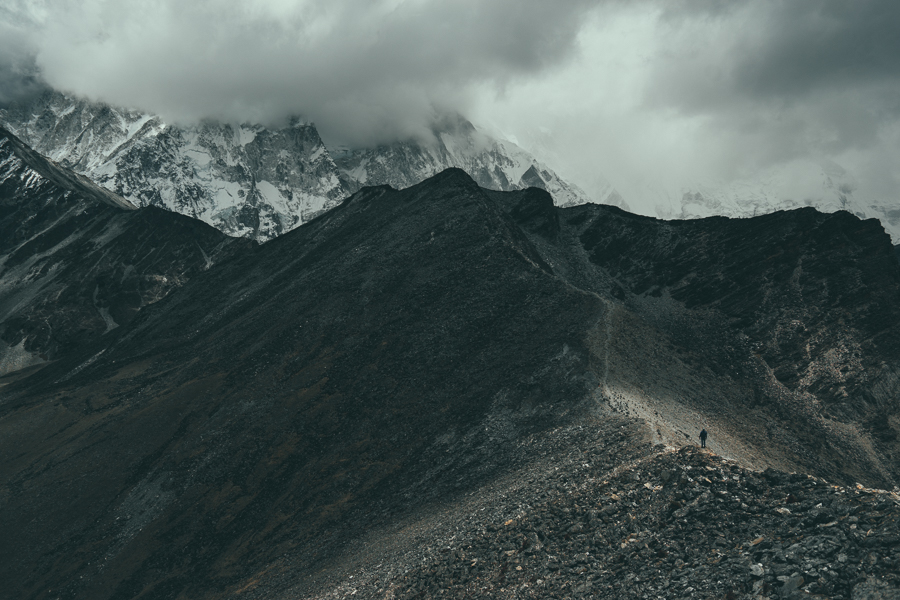
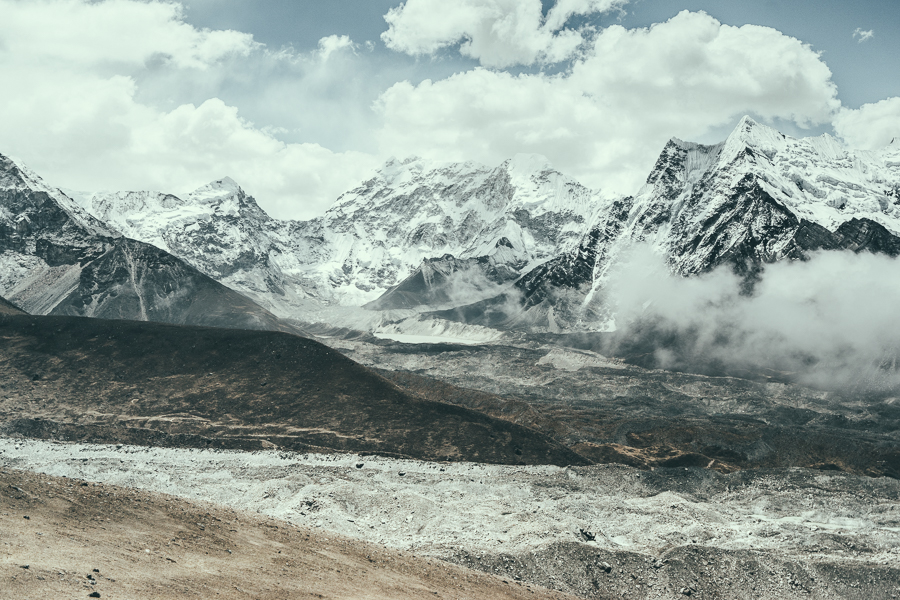
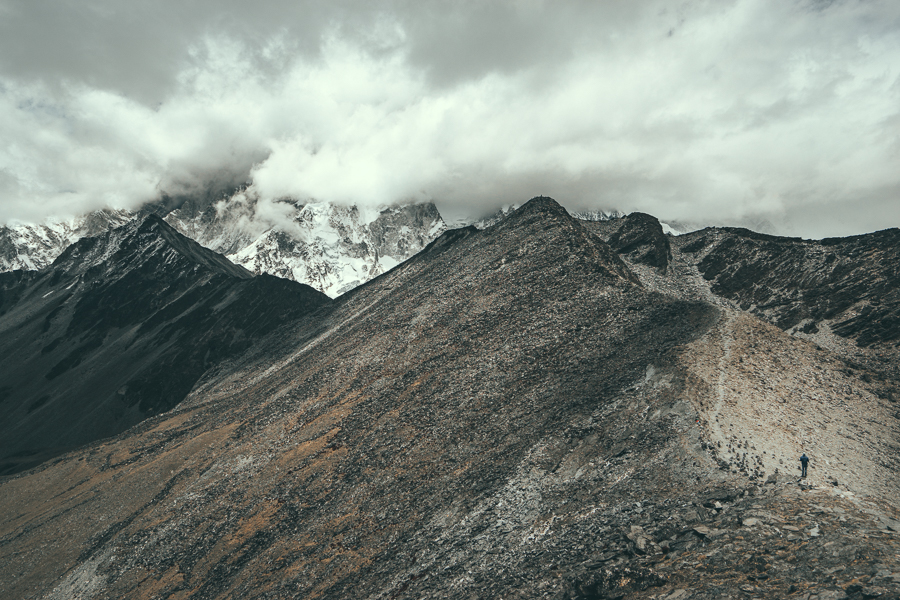
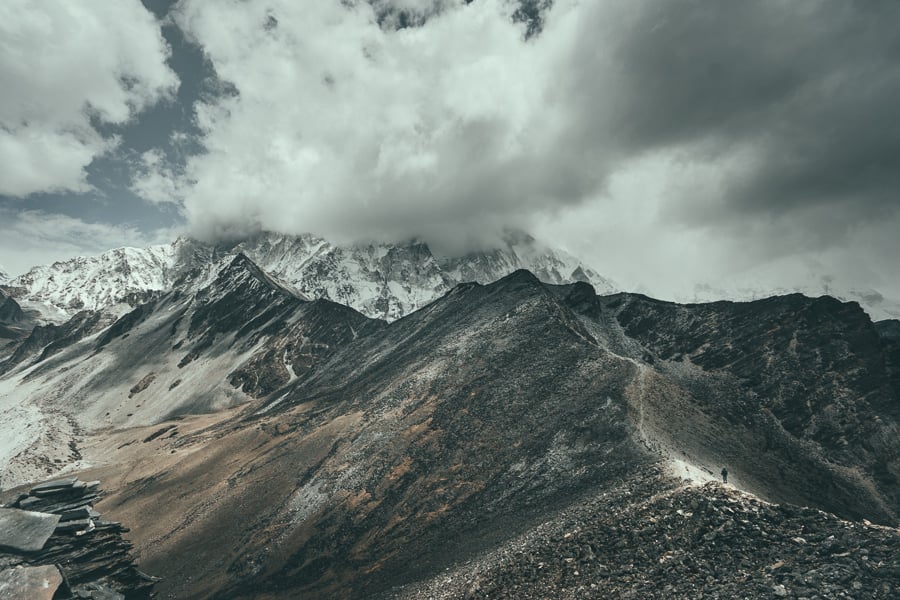
On day seven of the Everest Base Camp trek, we hiked from Dingboche to Lobuche, which is actually the second-highest village on the entire trail. Today is also the first time we will see the Khumba Glacier, which is one of the highlights of the trip.
The total elevation change for day seven is 500 meters in altitude but you will climb 600m in total for the day taking into account a few downhill sections on the trail. It’s a shorter day taking just four hours to reach Lobuche from Dingboche.
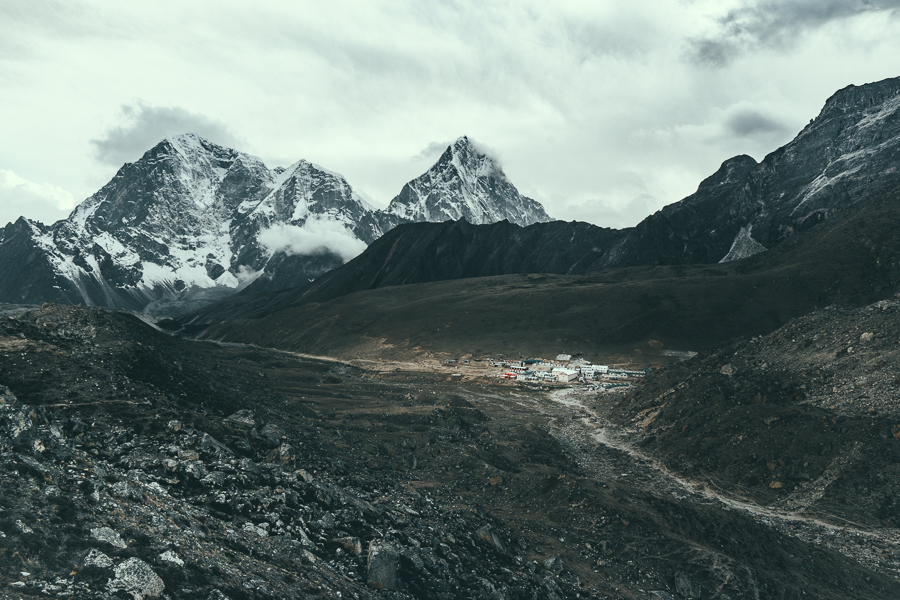
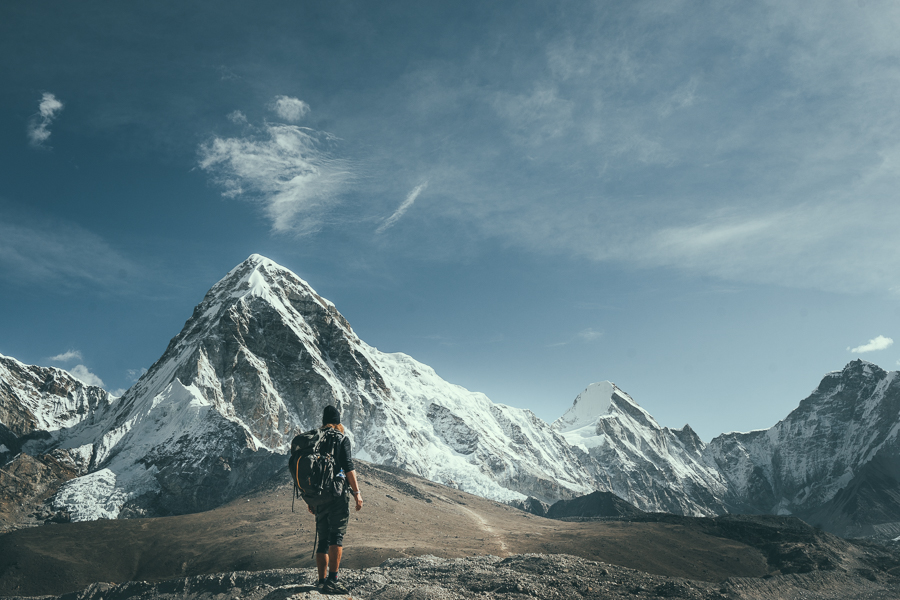
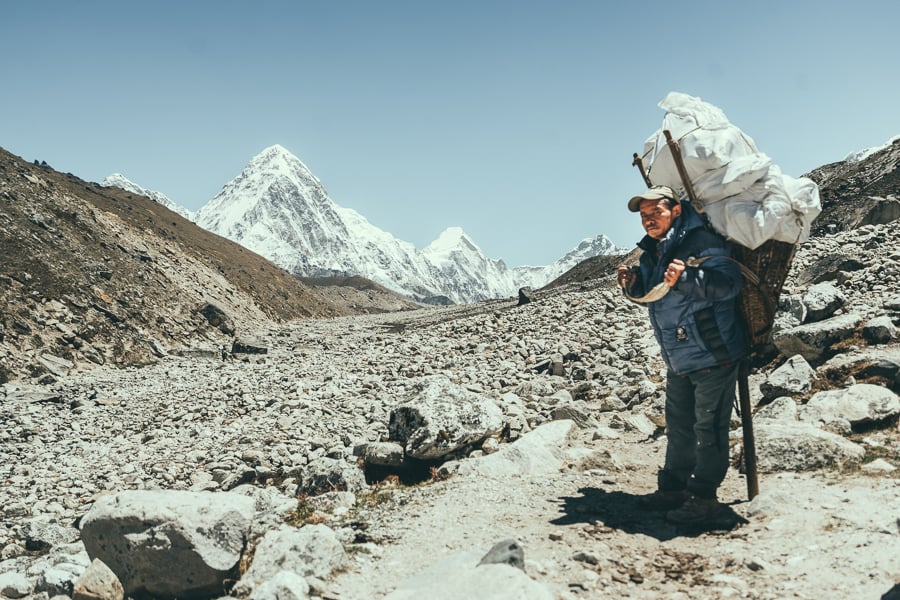
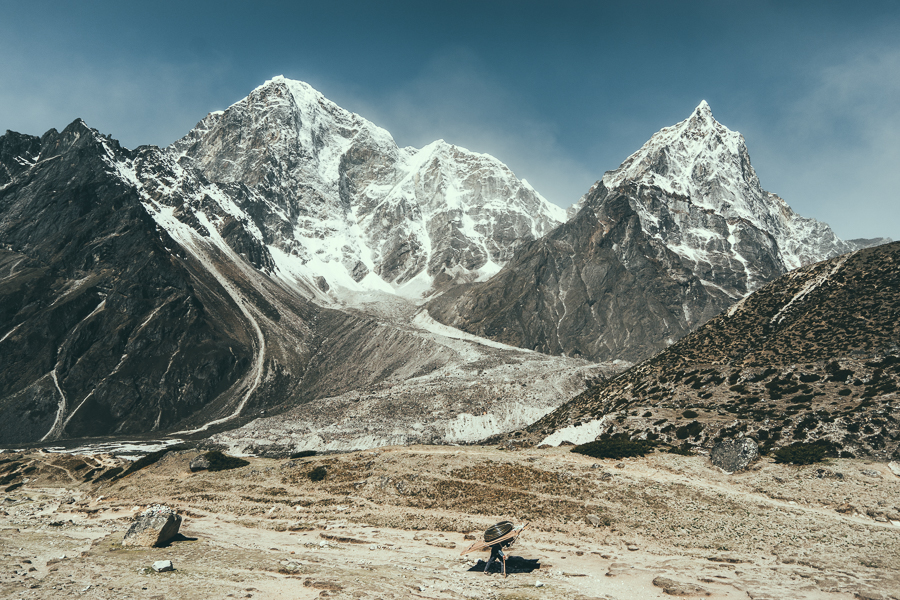

Day Eight: Lobuche to Gorak Shep to Everest Base Camp
On day eight of the Everest Base Camp trek, it is finally time to reach Everest Base Camp. From Lobuche your first trek to Gorak Shep, which is the highest village you sleep at throughout the trek.
Gorak Shep is a small village, and it’s the closest to Everest Base Camp is also the closest village to Everest Base Camp. Basically, you will trek to Gorak Shep, have an early lunch, and drop off your bag before doing the round-trip trek to explore Everest Base Camp. Then you will return to Gorak Shep where you will stay the night before heading to the nearby Kala Patthar in the morning.
The journey from Lobuche to Gorak Shep is along a rocky path, which slowly gains elevation as you walk next to the Khumbu Glacier. From Gorak Shep to Base camp, you will reach an altitude of 5,364m, which won’t be the highest on the trek as you will go higher the next morning at Kala Patthar.
When you leave Gorak Shep you walk next to the Khumbu Glacier with the Everest Mountain Range looming behind. The glacier is covered in dust and rocks due to the sediments, which have been falling from the surrounding peaks over the last years.
The trail continues alongside the glacier until you reach Everest Base Camp. It’s interesting because you actually can’t see Mount Everest from the base camp, which surprised me but the surrounding peaks are still very impressive and dramatic. Depending on if you come during the climbing season or off-season will alter how the base camp looks. I visited in the low season so there were no tents set up and it was pretty barren.
The trail continues past some Sherpa prayer flags as the rocky terrain leads you towards the famous Everest Base Camp rock, which is covered in hundreds of prayer flags. We’ve made it!
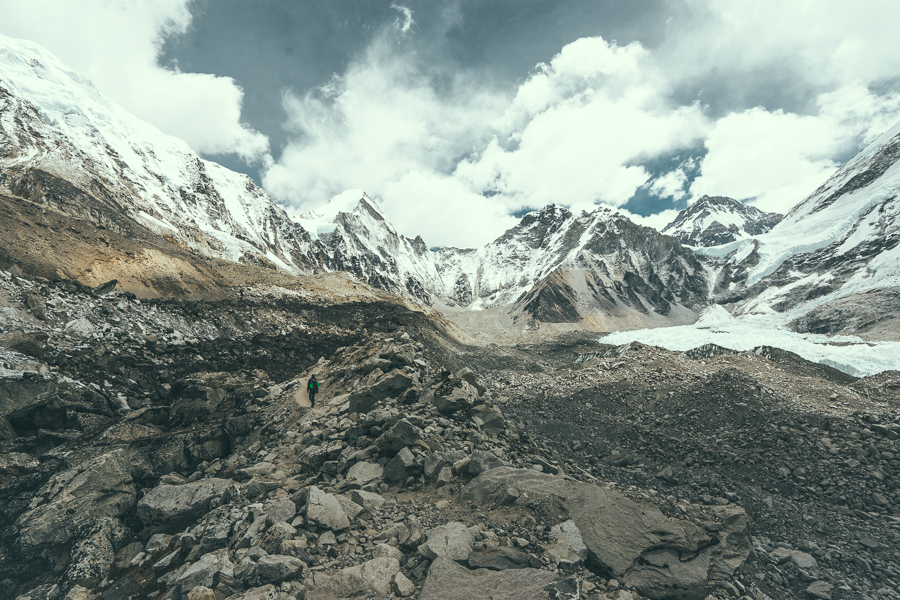
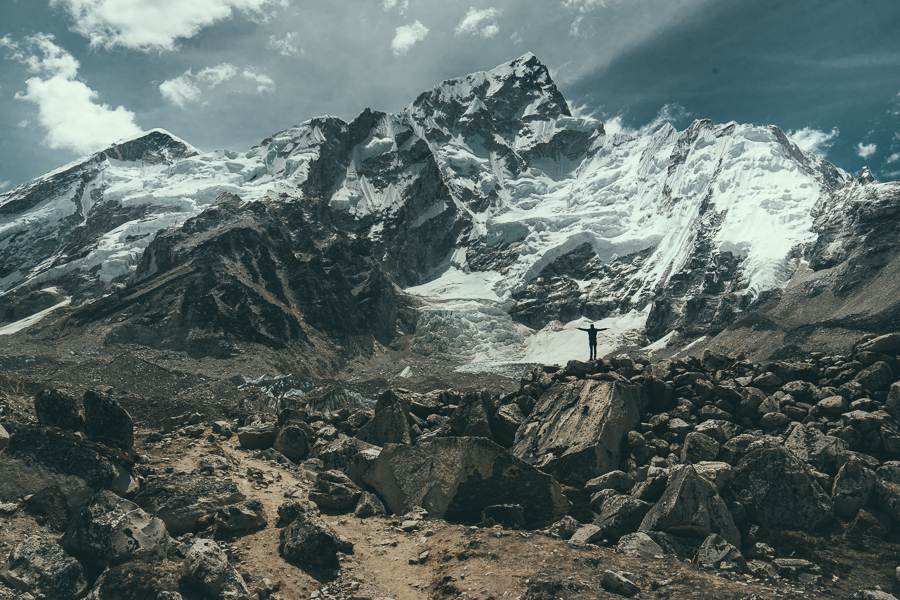
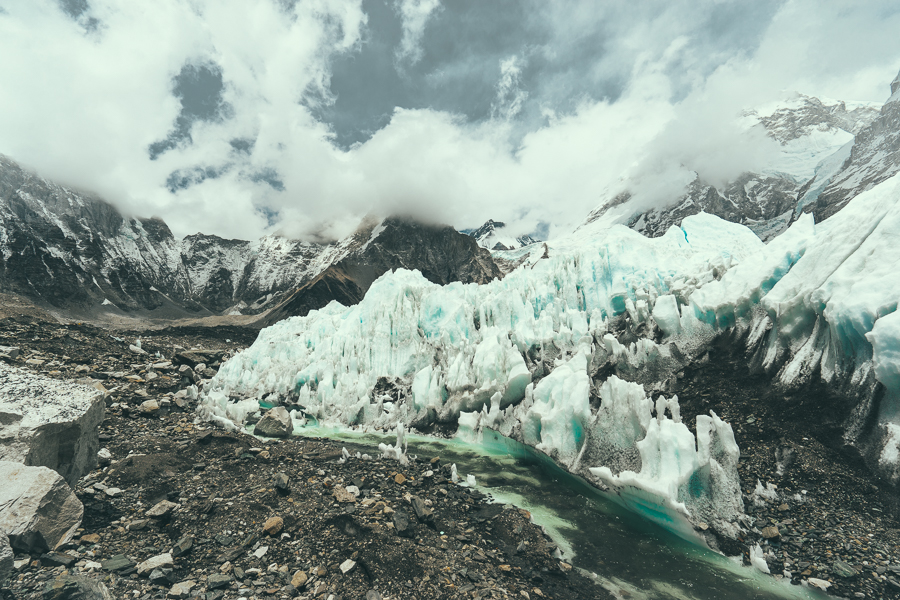
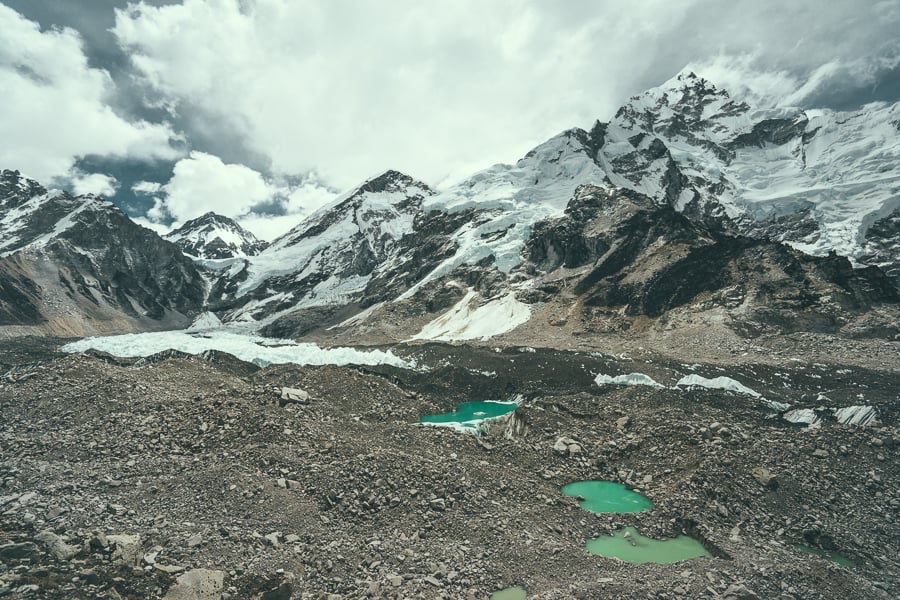
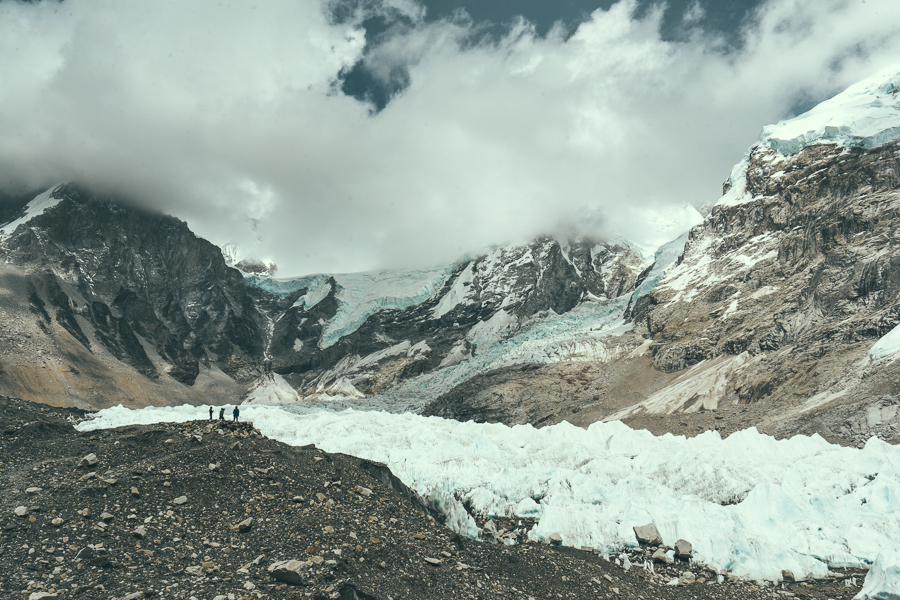
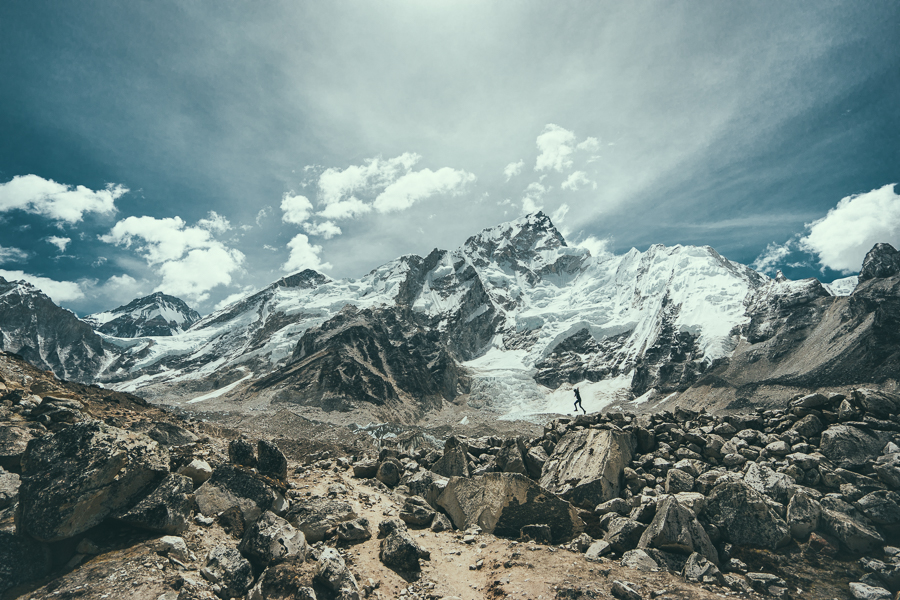
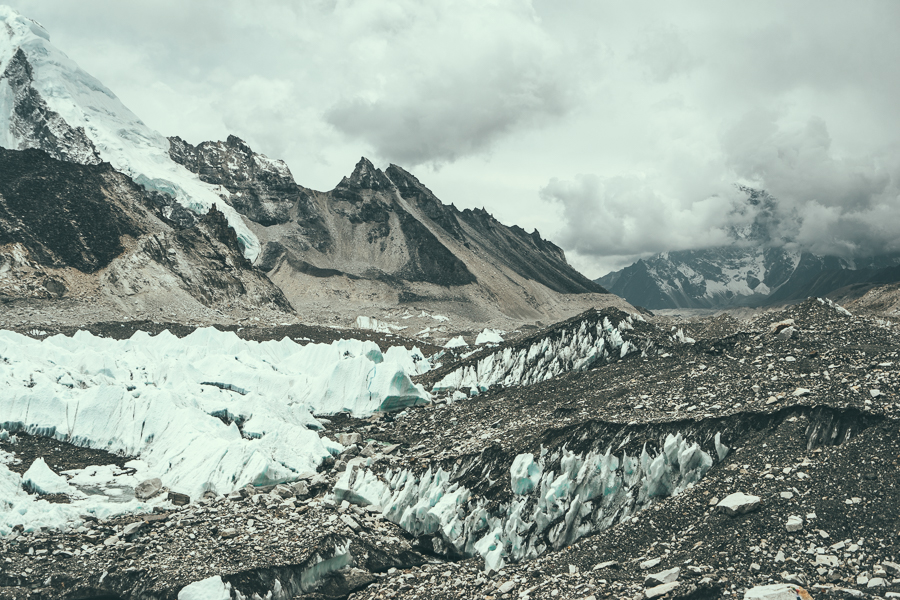
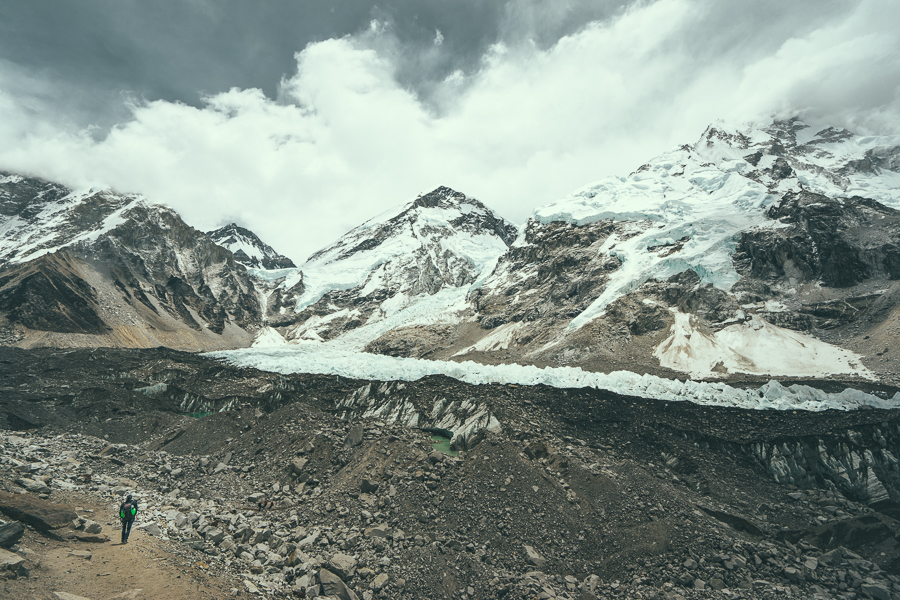
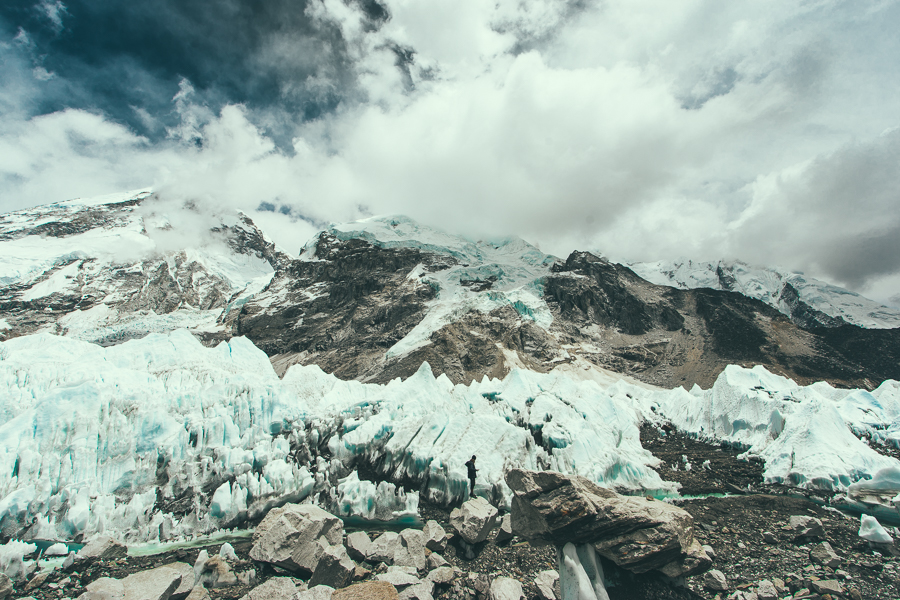

Day Nine: Kala Patthar
The highlight of the Everest Base Camp trek was the climb up to Kalapathar (also spelled out as Kala Patthar). It’s a 5,540-meter peak, which looms over the small village of Gorak Shep where you have just spent the night. It’s worth the freezing wake-up call in the morning as it is one of the best spots in Sagarmatha National Park to take in the views of Mount Everest.
It’s only a 3-kilometer round-trip trek from Gorak Shep with 300 meters of incline but at such high altitude, it can be quite difficult. I suggest starting 1.5-2 hours before sunrise so you are at the summit when the morning glow begins. After enjoying the sunrise with epic views of the cloud-filled valley and Mount Everest, we began the trek back down to Lukla.
It would take us another two days to reach Lukla, which is less than normal but going down is much easier.
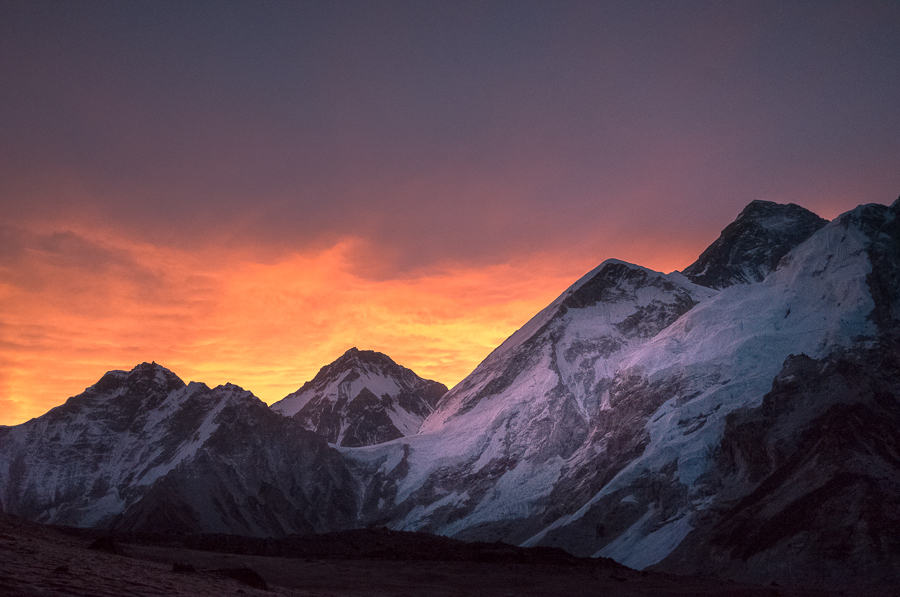
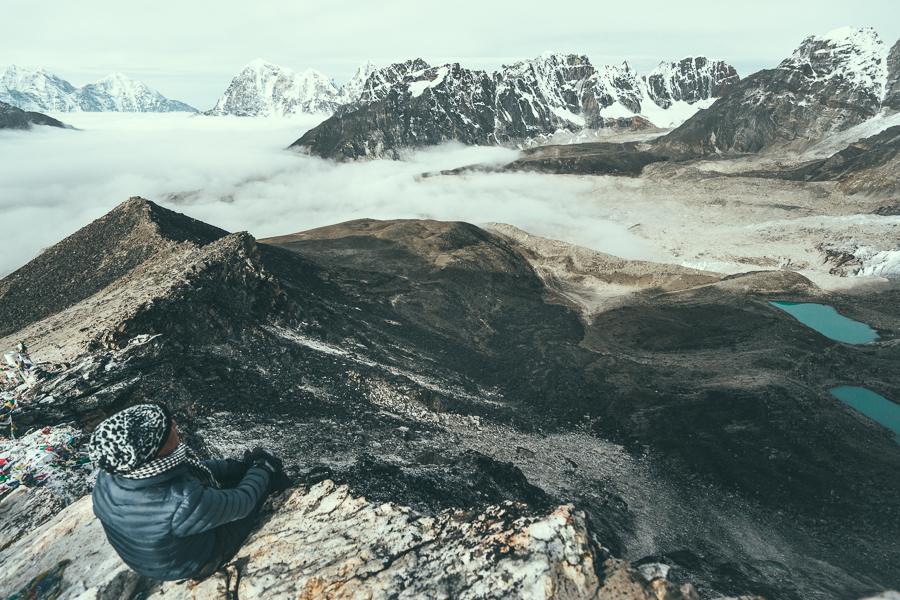
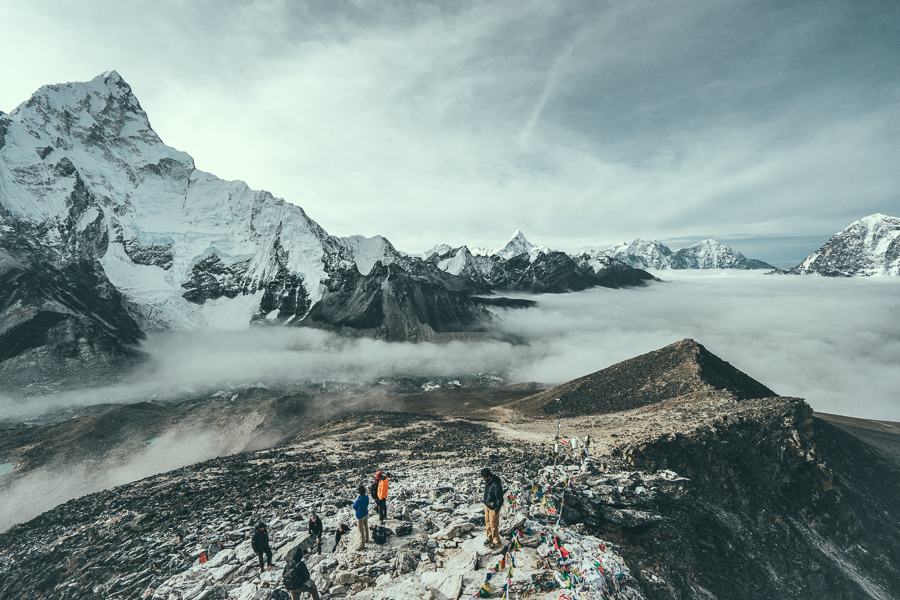

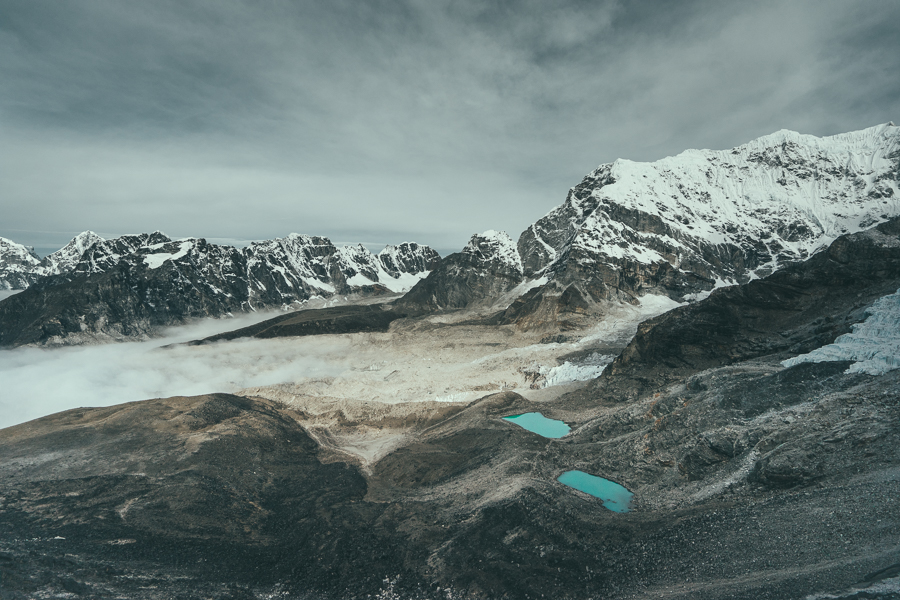
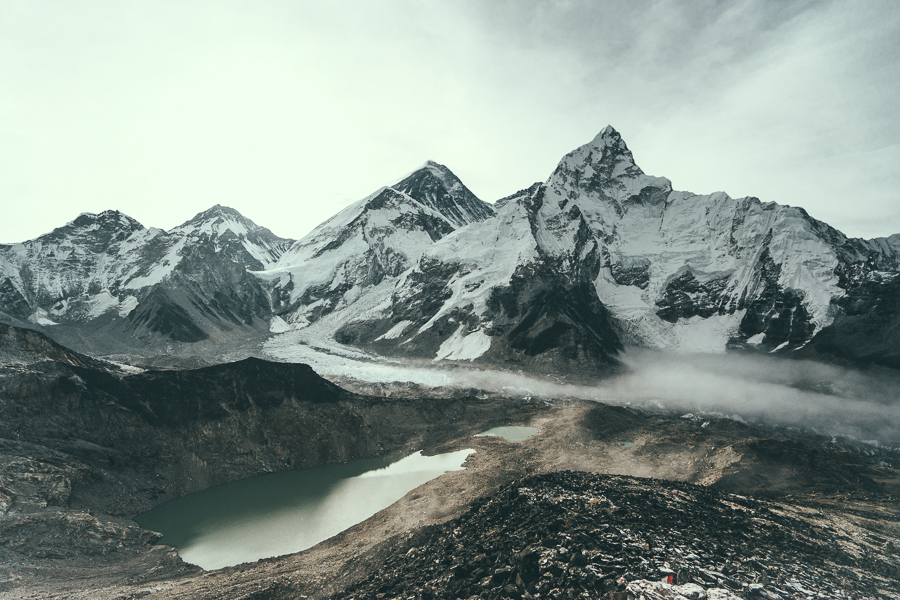
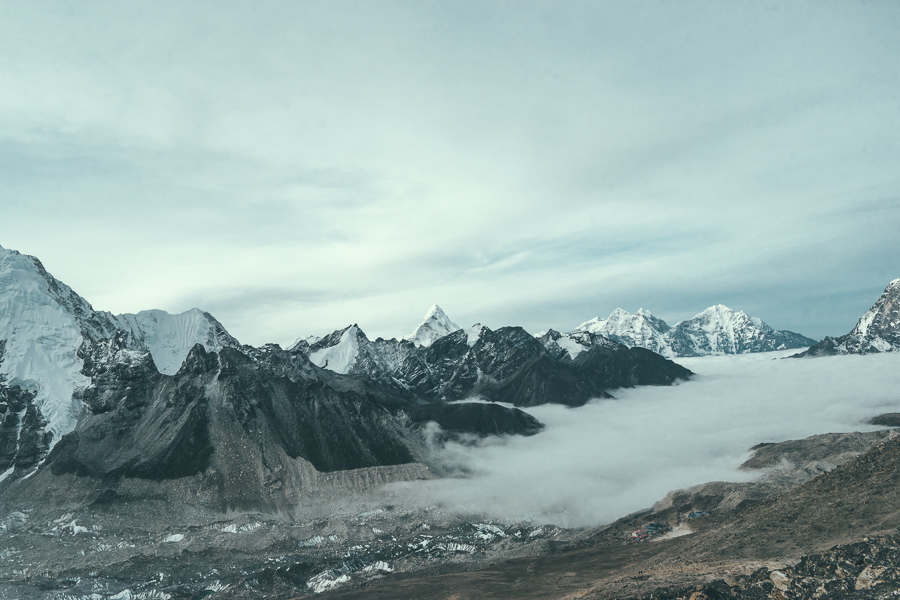
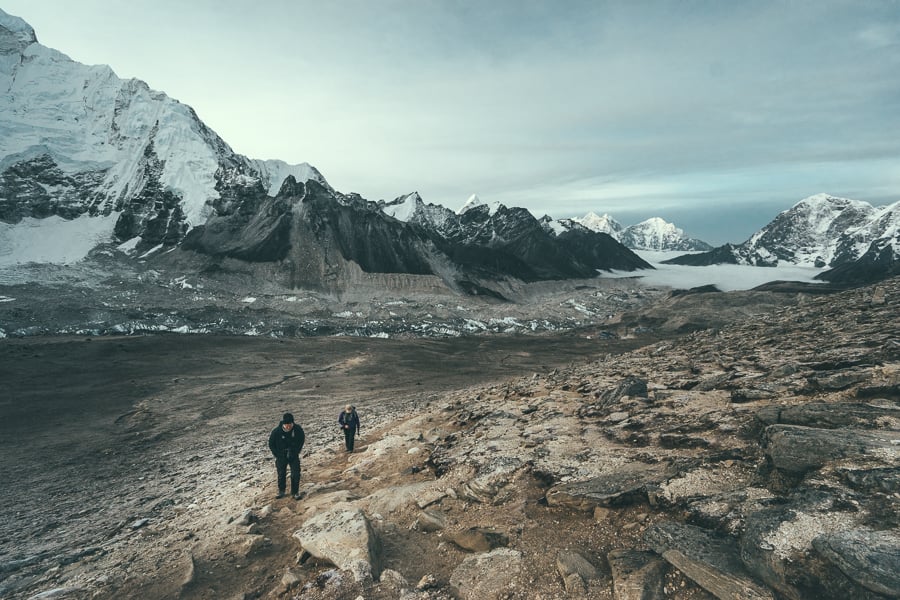
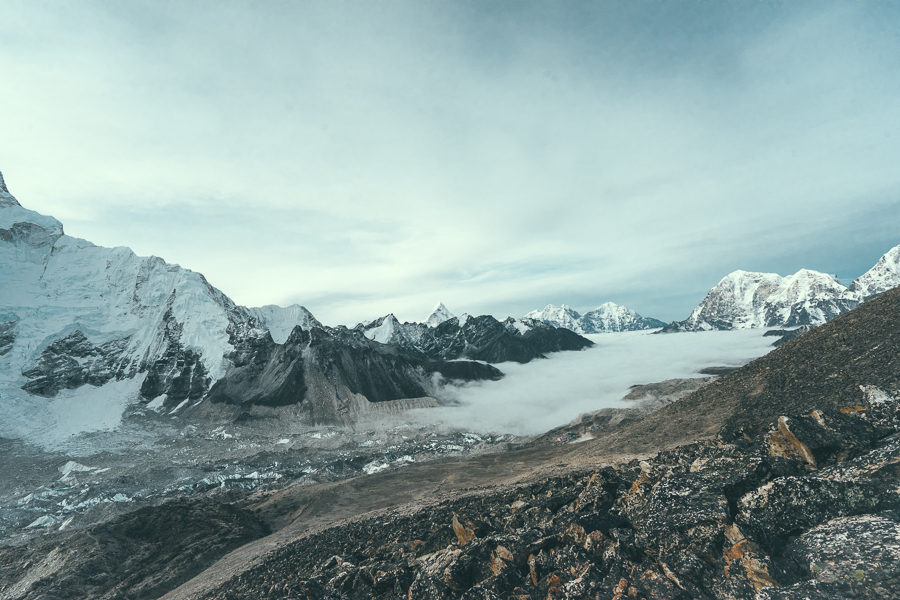
Day Ten & Eleven: Heading back down
Heading back down is now at the pace of your choosing. We were keen to get back to Kathmandu so we took just two days to head back down the mountain. With altitude sickness no longer an issue, you can really make some good time.
If you are ahead of schedule you can keep going to the next village as there are no pre-made bookings. Heading down is a great feeling as you have accomplished reaching the base camp and you can now just breathe in the mountain air and enjoy the descent.

EVEREST BASE CAMP TREK: THE ULTIMATE GUIDE
In this section of the blog post, I will share with you the logistics and everything you need to know about trekking to Everest Base Camp.
HOW TO TREK TO EVEREST BASE CAMP
You have a few different options depending on your experience and requirements:
- Book a package through an agency to join a tour group
- Do the trek independently (not with an agency) but still hire a guide and/or porter
- Do the Everest Base Camp Trek entirely independently
If you are alone and don’t want to do the trek independently then it is a great idea to join a group. There are lots of free time and chill moments at the teahouses to play cards and chat with your group.
Doing it entirely independently means you are in charge of all the logistics and it can be quite stressful if you aren’t experienced at managing all flights, maps, costs, negotiations, food, language barriers, first-aid and more.

BOOKING AN EVEREST BASE CAMP TREK IN ADVANCE
These are the most popular routes and are organized by the top tour companies who have a global reputation.
The Everest Base Camp Trek doesn’t require a guide but it’s great to have a guide managing the logistics such as directions, tea-houses, distances, medical issues, and the overall organization. I’d say 90% of trekkers go with a guide.
I highly recommend booking with Himalayan Masters which is one of the top trekking companies when it comes to the Everest Base Camp Trek. I’ve trekked many different routes in Nepal with them and I’m a big fan of their attention to detail.
The trek costs around $1500 USD with Himalayan Masters as of 2022 and includes all transfers, accommodation, meals, drinks, permits, and even the hotel stay before and after the trek at a high-quality hotel. I honestly had a great time on this trek and I can wholeheartedly recommend Himalayan Masters.
You can use my discount code ‘JACKSON5‘ for 5% off the total price of your trek with Himalayan Masters which is a pretty handy saving.
Email: [email protected]
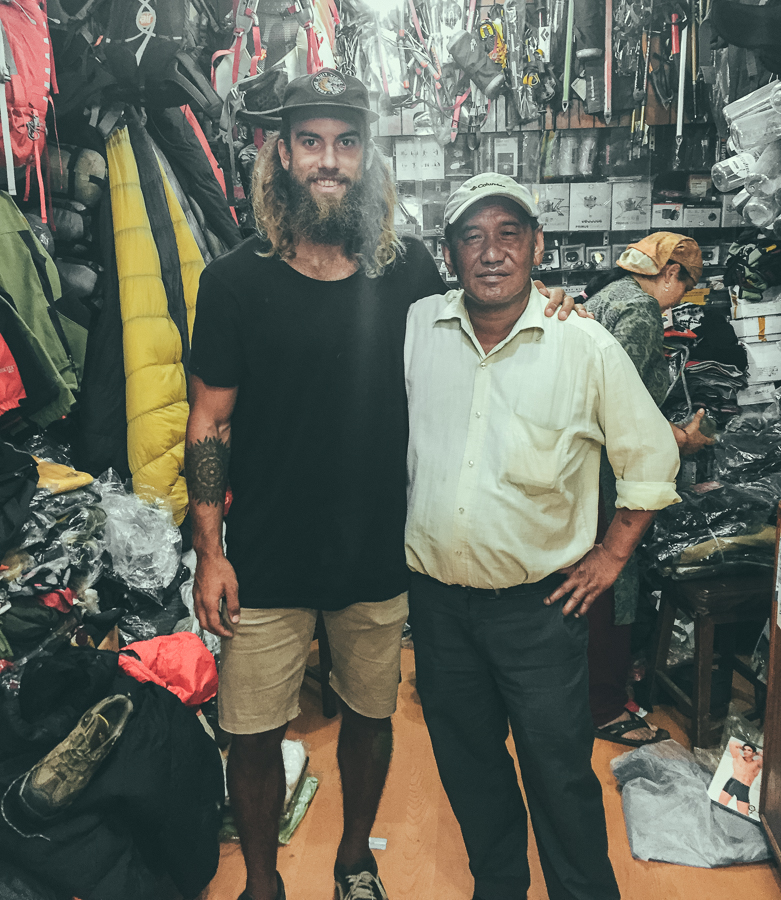
CHOOSING THE RIGHT TOUR AND A GUIDE
Trekking to Everest Base Camp can be done without a guide although I suggest hiring one. Here are 3 reasons why:
- Directions: The route isn’t incredibly hard to follow but there are many twists and turns I would have missed had I not had a guide. The route is available on many maps and map applications but it isn’t a clear trail throughout and some previous experience following a trail in a foreign country would be necessary.
- A guide is relatively cheap to hire: Included in your trekking package will be a qualified guide. However, in your package is also meals, accommodation, flights, etc. The guide him or herself will only cost $10-15 per day.
- When things go wrong: My guide helped me through food poisoning, altitude sickness and was as much a nurse as a guide. I rarely get sick at normal heights but altitude sickness is uncontrollable. I am pretty fit and it still smashed me hard. You can go it alone and be fine but it’s comforting to have a guide there when you come into trouble, especially with altitude sickness. My guide had seen it all before so his calm made me feel better about feeling sick for four days straight.
If you think you will get a guide like the majority of people on the Everest Base Camp, you have a lot of options and things to consider. Pictured below is my guide, Lapsang, who was a legend and someone who became a good friend. When I left Nepal he waited at the bus stop for two hours with me and gave me a Nepali scarf as a gift.
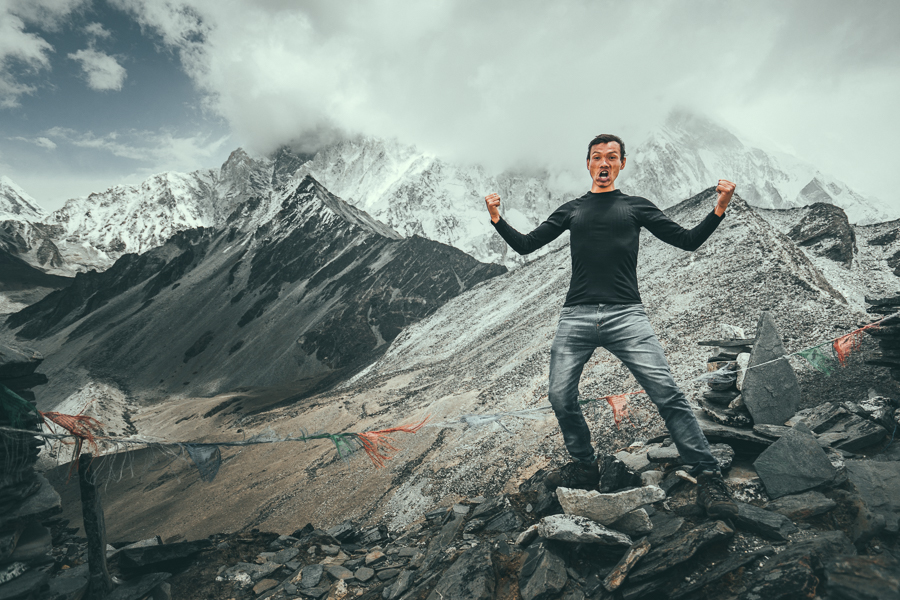
I suggest going with a small group of friends. We saw a few big groups and it looked like a Contiki tour compared to the experience I had with just myself and my guide. Only get a porter if you really need it. You should be able to carry your bag for 4-5 hours of trekking each day.
My guide, Lapsang Tamang, had done the trek multiple times as a porter and now many times a guide. He said he has lost count but somewhere over 20 times, he has been hiking the Everest Base Camp Trek. The best thing to do is to contact my guide and arrange to meet him first in Kathmandu so you can chat and decide if you want to go ahead. You will be together for 12 days after all!
You can directly contact my guide Lapsang by emailing him here: [email protected]
Lapsang is an awesome guy and I had too many chai tea hangouts with him before and after the trip. Lapsang and I became friends during the trip and afterward, we went bungee jumping, cooked Dal Bhat at his apartment, and visited Swayambunath Temple.
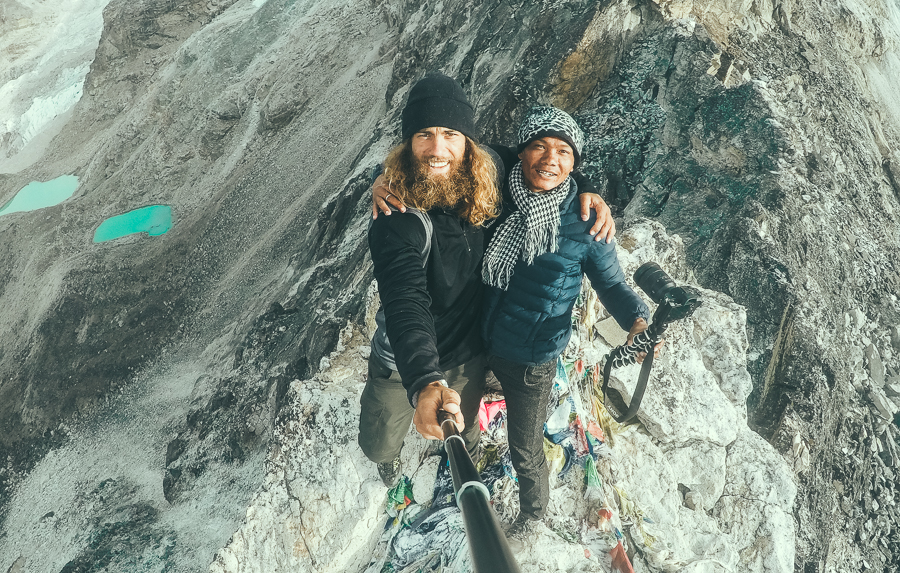
EVEREST BASE CAMP PACKING LIST
I had no winter clothes or even trekking shoes before getting to Kathmandu and bought it all for under $200 brand new (Likely fake North Face). But just as a guide you can get all the gear new for under $200. Bargaining/second hand etc. may help you get it a bit cheaper but this was one time I didn’t want to be so tight with money then freeze my ass off later on top of a mountain.
Keep in mind you won’t be doing any washing. Clothes that dry quickly and are lightweight are key. I showered once… Here is a list of what I took:
Clothes
- 2 pairs of pants that rip off into shorts ($15 each in Kathmandu) (Super Safari style but actually handy in this situation.)
- 2 long sleeve quick-dry material shirts ($10 each in Kathmandu)
- 5 Pairs of Thermal North Face socks ($2-3 per pair in Kathmandu)
- 1 Fleece pants and sweater. ($25 for top and bottom in Kathmandu)
- 1 Thermal Lycra long sleeve and pants ($20 in Kathmandu)
- 5-6 pairs of quick-dry underwear
- 1 huge waterproof down jacket (Rented for $1 a day in Kathmandu)
- Beanie ($1 in Kathmandu)
- Neck Buff ($2 in Kathmandu)
- Gloves ($5 in Kathmandu)
Other gear
- Headlamp
- Water Purification pills and 1L bottle
- Sunblock
- Sunglasses
- Hat
- Watch
- Camera gear and electronics (Not necessary but up to you. Obviously I carried a lot)
- Powerbank
All of this should fit into a backpack no bigger than 50L and be less than 15kg. I used my 60L backpacking bag because I didn’t want to buy a new bag for a two-week trek. It worked out fine and weighed about 13kg including all of my lenses, chargers, and power banks.
What are my favorite pieces of trekking gear?
There are six pieces of gear that I simply never forget when I go trekking. These are five items that I using right now and this list gets updated every year! Here are my trekking essentials.
- Arcteryx BETA AR Rain Jacket: This is my go-to rain jacket. It’s super light, folds down into a tiny ball, and protects brilliantly in a storm. This one never leaves my backpack.
- Salomon X Ultra 3 Mid GTX Hiking Boots: For the best ankle support, waterproofing, and durable exterior I’m a fan of tough but light hiking boots like these Salomons for my adventures.
- Black Diamond Head Torch: I can’t tell you how many times, I’ve arrived back from a hike unexpectedly late. I always keep this lightweight but strong headtorch in my bag for the unexpected.
- Darn Tough Socks: These are the most comfortable hiking socks I’ve ever worn and last for years. They also have a lifetime warranty and you just send them in with a hole and they replace it no questions asked.
- Osprey Atmos AG 65L Backpack: I’ve never had a more comfortable 65L pack than this one. I got it in the Navy Blue and have trekked with it through many a mountain.
- Black Diamond Trekking Poles: They might feel weird at first, but on a long trek with incline and decline you’ll begin to love these.
- Grayl GeoPress Water Filter Bottle: I’ve used this for three years. It filters your water with one press and you can drink directly from it. Never buy a plastic water bottle again!
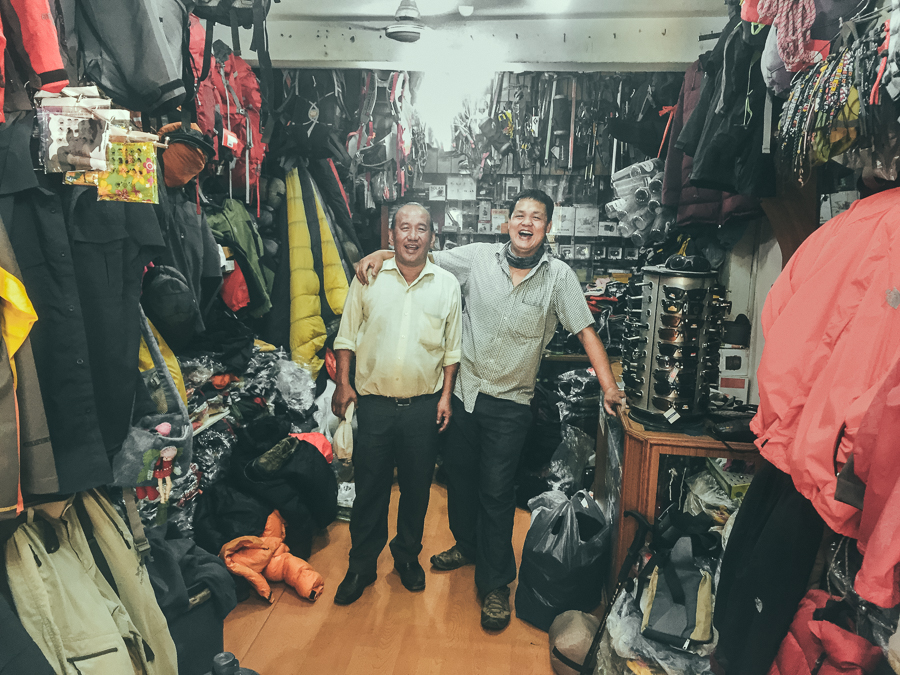
EVEREST BASE CAMP TREK COST
I paid $900 USD for my package all the way back in 2016 but you can expect to pay anywhere from $1400 to $2500 these days.
What’s included in the package for trekking to Everest Base Camp:
- Taxi from Thamel to Kathmandu Airport
- Flights from Kathmandu Airport to Lukla Airport
- Flights from Lukla Airport to Kathmandu Airport (Regular price $320 round trip)
- Breakfast, lunch, and dinner from the guesthouses you are staying at. I could pick anything on the menu, which had western options or Nepali options. You can eat pancakes, pizza, and burgers or you can go for the 24-hr Nepali Power Dal Bhat. I could also choose any hot drink with each meal.
- Your guide throughout the trip.
What’s not included:
- Water. You can buy bottled water like me if you are playing it safe. It is $1 per bottle at a lower elevation and $3 per bottle at the highest elevation. Or lots of people use purification tablets and they seemed to be fine.
- Wifi
- Electricity

EVEREST BASE CAMP TREK: WIFI/ELECTRICITY AVAILABILITY.
Wifi: Costs anywhere from $3 to $10 to use wifi at the guesthouses. Buy a Ncell Sim before you go. Ncell works at 50% of the guesthouses.
Electricity: You will have to pay anywhere from $2 at low elevation to $8 at high elevation to charge your power banks, cameras, and phones. The key is to get a fat power bank. Pay to charge that then charge everything from your power bank. My power bank lets me charge my phone and four camera batteries before it would be done.

EVEREST BASE CAMP TREK: BEST TIME OF YEAR
This is an interesting question. Do you want snow, reliable weather or to get away from crazy crowds?
February to May – Peak season, clear bright days, very busy trails, lots of people attempting Everest ascent
June to August – Monsoon season, no crowds and empty guesthouses
September to October – Most stable and clear weather, trails are quite busy
November to January – Coldest period, can reach -25, some routes closed
I trekked in the first week of June and was lucky to escape the rain. I didn’t get wet once. Normally it rained in the afternoon or at night if at all but we trekked in the morning and usually only heard the rain as we slept. The trails were open and some days we didn’t even see anyone.
My guide showed me a photo of Namche on a busy morning and I couldn’t believe it. The path looked like the start of a marathon. After seeing that I was so glad to have gone in the off-season.

EVEREST BASE CAMP TREK TEMPERATURE
During June when I trekked it was sunny in the days and I actually wore shorts every day. However as I mentioned above about when the best time to be trekking to Everest Base Camp is, it can get very cold at high elevations during November to January (-20 to-30)
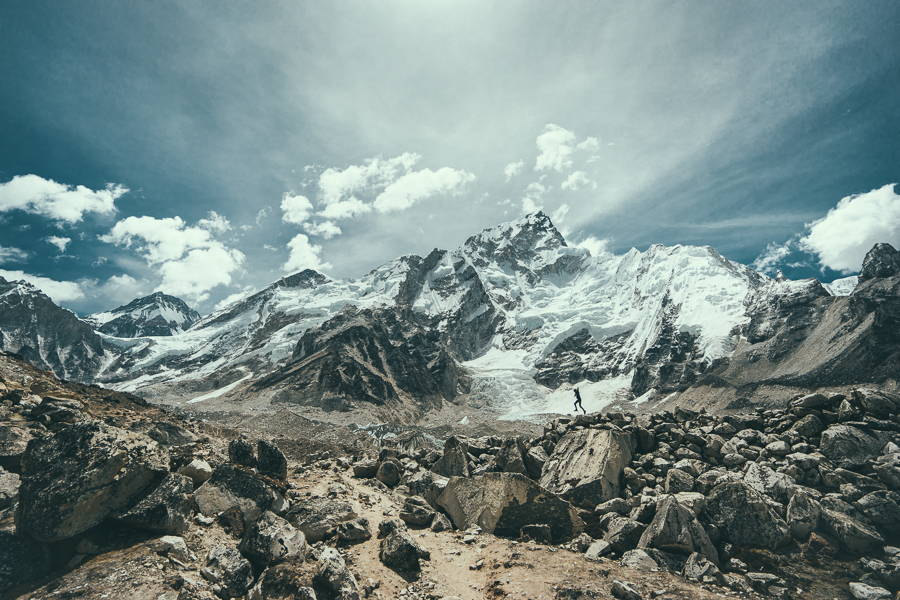
EVEREST BASE CAMP TREK DIFFICULTY
Trekking to Everest Base Camp takes some serious effort. But do you need to be in great shape to complete the journey? The simple answer is NO.
You can go at a slow pace, your own pace, and still make it to Everest Base Camp. In fact, going slow will help you to acclimatize better. I am all about speed but this is not a race. Some days we only trekked for just over three hours but we gained 500m in altitude so we rested for a day and then went again in the morning.
Having said all of that you should be able to walk 10-15 km in a day. Be able to walk up intense inclines for at least an hour. Be able to carry a bag while doing all of this unless you plan to hire a porter.
It’s hard to measure if you are ready. It isn’t like a marathon or anything else you have ever done most probably. I didn’t train at all and was fine. I’m in pretty good shape and played sport my whole life. There were people on the trail who were overweight and going incredibly slow but they were right there with us at base camp to celebrate the achievement.

EVEREST BASE CAMP ALTITUDE
The base camp is 17,600 ft or 5,380m. However, you will probably also trek to Kala Patthar, which looks over the base camp. Kala Patthara is 5,644m high.
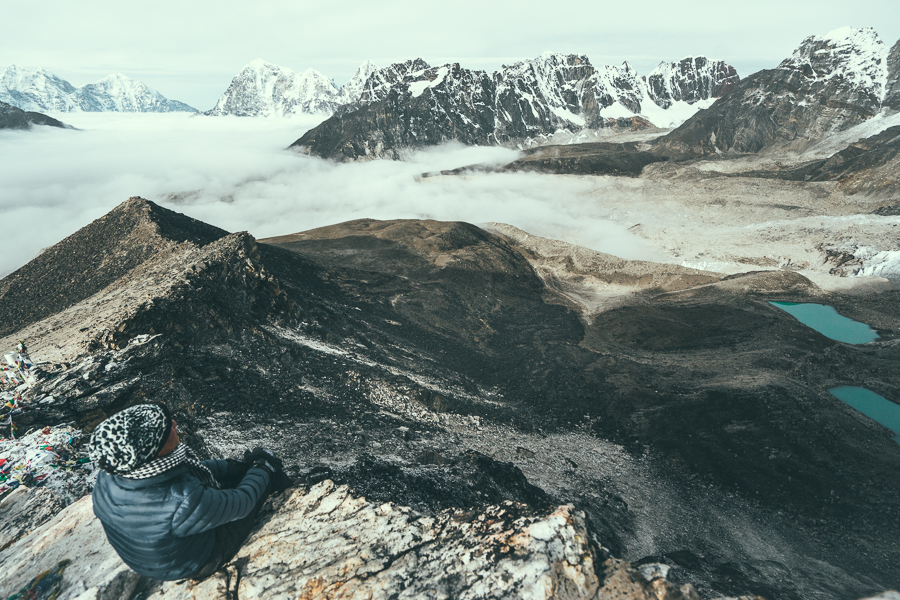
EVEREST BASE CAMP TREK DISTANCE
The distance from Lukla the first town to Everest Base Camp is 38.58 miles or 62 kilometers. Most people take 8-9 days trekking to Everest Base Camp and 3-4 days trekking back to Lukla. It took 8 days to trek to Base camp and two days to trek out.

EVEREST BASE CAMP ITINERARY
Your itinerary will vary depending on your speed and your guide. However, most people follow a somewhat similar trail and timeline. This was my timeline. Note that I spent one extra day in Phak Ding due to sickness. Most people spend that extra day in Namche.
- Day 1. Kathmandu flight to Lukla
Lukla to Phak Ding (3-4 hrs) - Day 2. Phak Ding rest day (sickness)
- Day 3. Phak Ding to Namche (5 hrs)
- Day 4. Namche to Tenboche (4 hrs)
- Day 5. Tenboche to Dinboche (3 hrs)
- Day 6. Dinboche to Chukhung Ri (2.5 hrs)
Chukhung Ri back to Dinboche (1.5 hrs) (Acclimatization day) - Day 7. Dinboche to Lobuche (3 hrs)
- Day 8. Lobuche to Gorak Shep (2 hrs)
Gorak Shep to Everest Base Camp (1.5 hrs)
Everest Base Camp to Gorak Shep (1.5 hrs) - Day 9. Gorak Shep to Kala Patthara (2 hrs)
Kala Patthara to Gorak Shep (1 hr)
Gorak Shep to Tenboche (7hrs) - Day 10. Tenboche to Lukla (8 hrs)

I hope you enjoyed my guide to the Everest Base Camp Trek and you have a great adventure.
HAVE YOU READ MY OTHER NEPAL BLOGS?
I’ve been lucky enough to have many awesome adventures in Nepal, which you can check out below where I’ve listed some of my favorite blog poss from Nepal.
- The Most Iconic route: Everest Base Camp Trek
- The Most Scenic Route: Annapurna Circuit Trek
- My Favorite Trek in Nepal: Manaslu Circuit Trek
- An Easy Nepal Trek: Langtang Valley Trek
- A great beginner peak: Island Peak Climb (6,165m)
- My Favorite Climb in Nepal: Climbing Ama Dablam (6,812m)
- My first 8000er: Climbing Manaslu (8,163m)
- My toughest climb in Nepal: Climbing Makalu (8,463m)
- Where to stay: 16 Best Places to Stay in Kathmandu


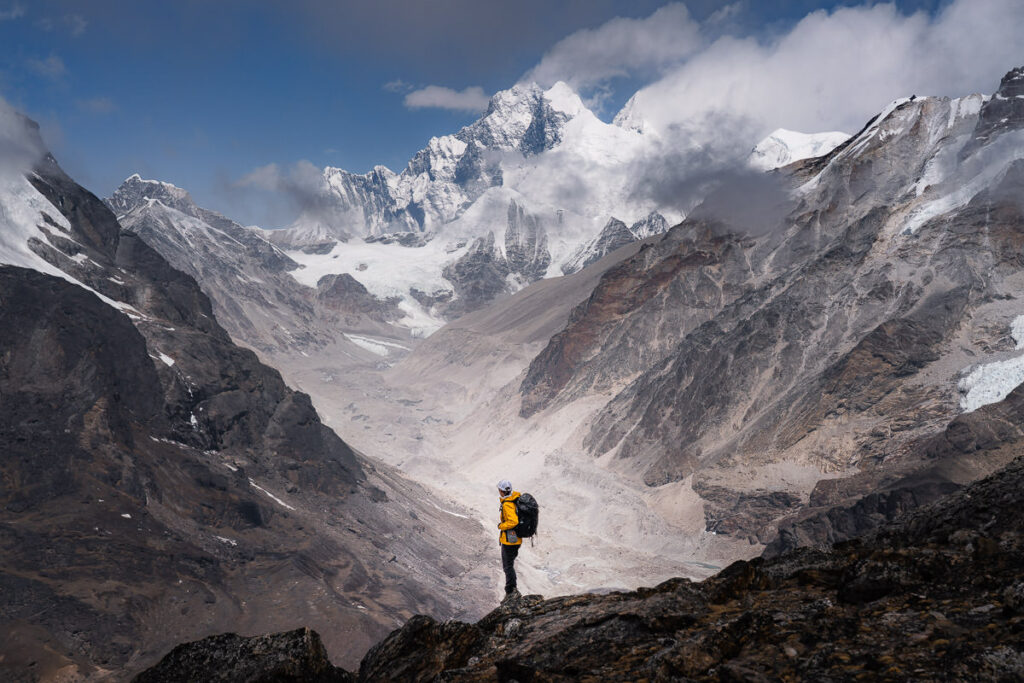
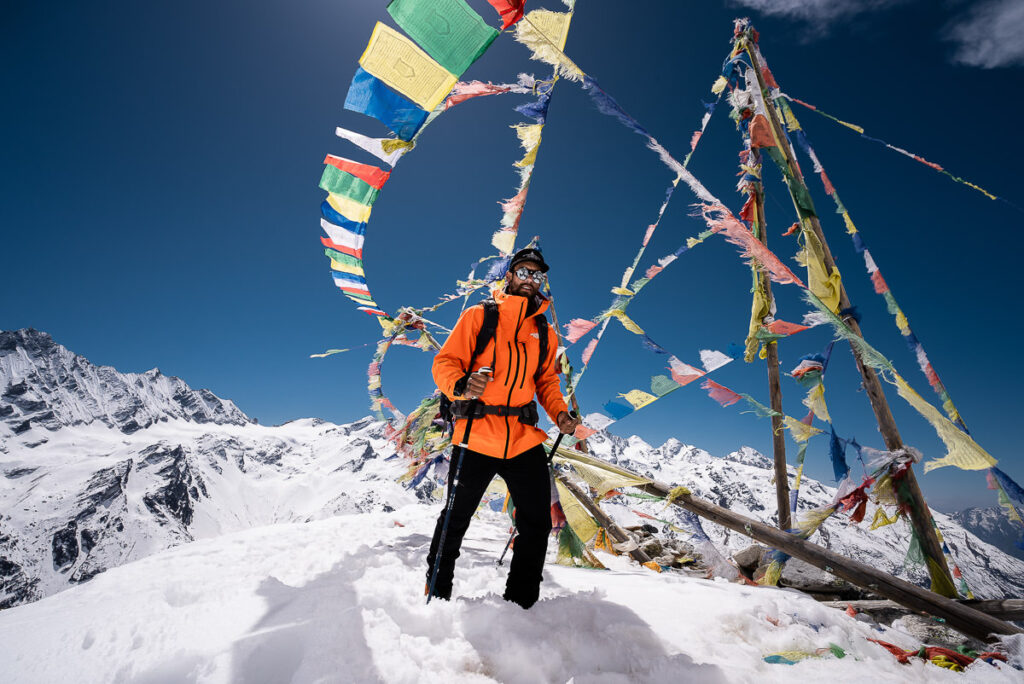
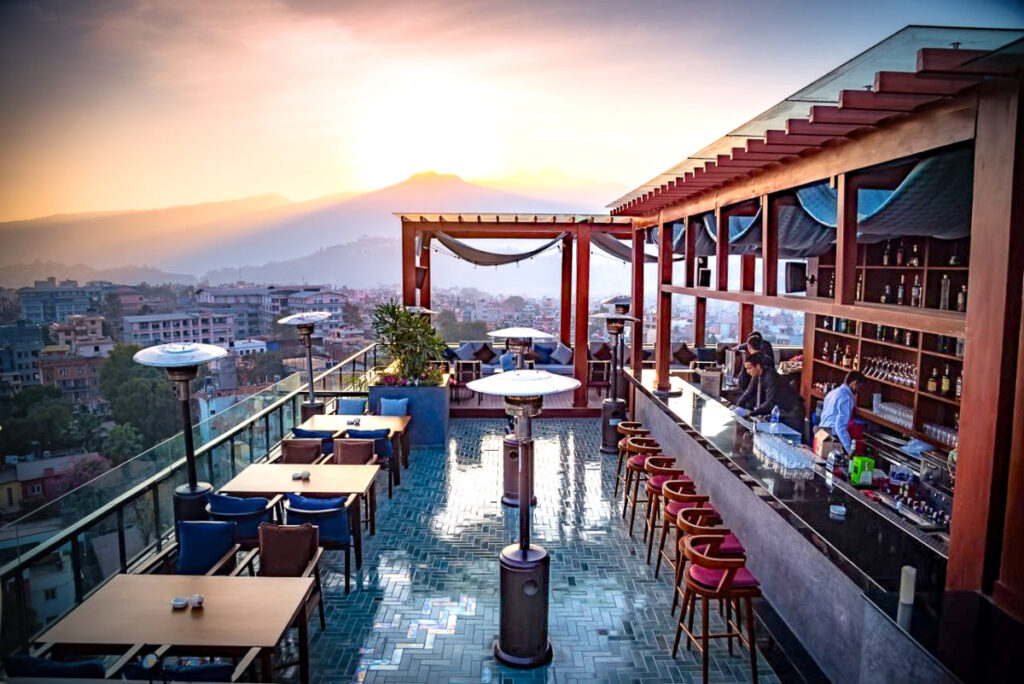
Tuesday 31st of October 2023
1
bijay lama
Sunday 17th of September 2023
So much informative articles which helps people to trek Everest Base Camp Trek
Inge Winkler
Saturday 3rd of June 2023
Hello, thank you for posting all the great infos, this will be very helpful for us. Could you please update me if the requirement of a Professional Guide is in place now or is there a way around it. Thank you so much in advance. Happy Trails, Inge
Jackson
Sunday 18th of June 2023
I believe you need a guide now to trek anything above 3000m
Raj
Monday 21st of November 2022
Thanks for sharing such an adventurous trip experience with us. I read your blog. It feels like I was personally enjoying this trip.
Sumeet
Friday 12th of August 2022
Hi Jackson,
This was a helpful and informative guide. Kudos!
I had a small suggestion: You could have a small sections box right in the beginning and link each sub-section directly to the relevant content below, for ease of navigation!
Thanks! SK